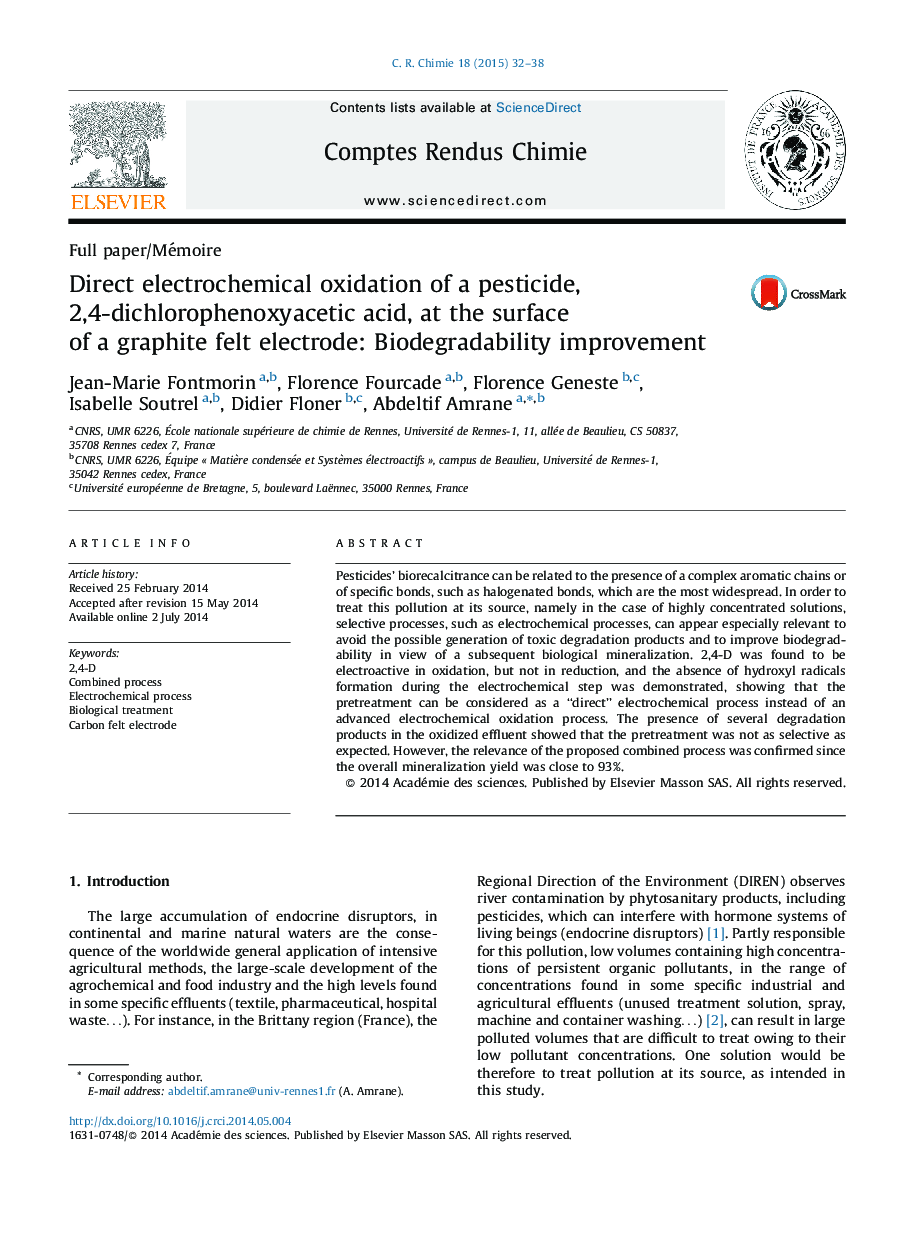| Article ID | Journal | Published Year | Pages | File Type |
|---|---|---|---|---|
| 170441 | Comptes Rendus Chimie | 2015 | 7 Pages |
Pesticides’ biorecalcitrance can be related to the presence of a complex aromatic chains or of specific bonds, such as halogenated bonds, which are the most widespread. In order to treat this pollution at its source, namely in the case of highly concentrated solutions, selective processes, such as electrochemical processes, can appear especially relevant to avoid the possible generation of toxic degradation products and to improve biodegradability in view of a subsequent biological mineralization. 2,4-D was found to be electroactive in oxidation, but not in reduction, and the absence of hydroxyl radicals formation during the electrochemical step was demonstrated, showing that the pretreatment can be considered as a “direct” electrochemical process instead of an advanced electrochemical oxidation process. The presence of several degradation products in the oxidized effluent showed that the pretreatment was not as selective as expected. However, the relevance of the proposed combined process was confirmed since the overall mineralization yield was close to 93%.
